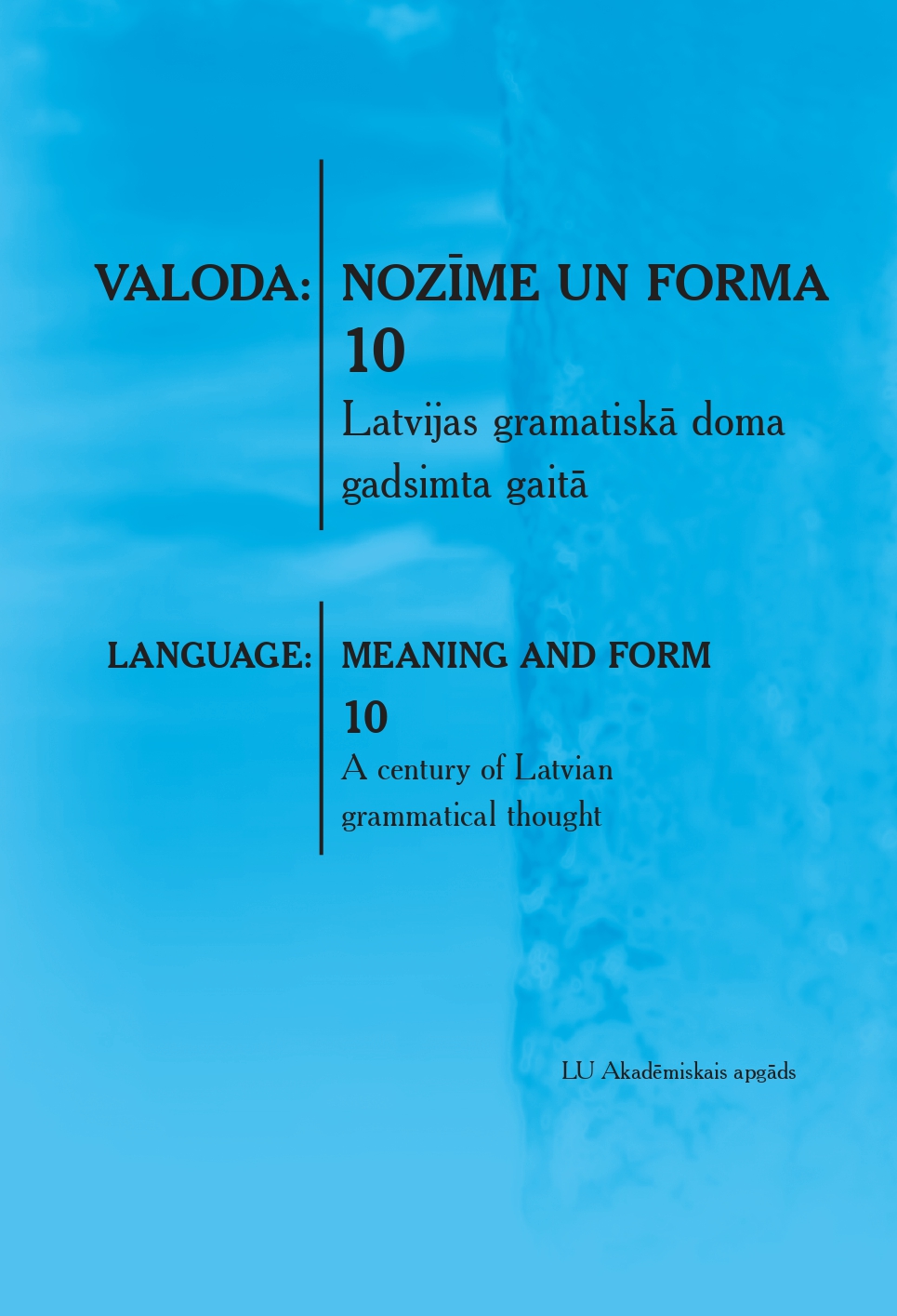From the history of the Georgian grammatical thought
From the history of the Georgian grammatical thought
Author(s): Giorgi Gogolashvili, Tamari LomtadzeSubject(s): Language studies, Morphology, Lexis, Historical Linguistics
Published by: Latvijas Universitātes Akadēmiskais apgāds
Keywords: normative grammar; practical grammar; normalization; grammatical idea; Georgian grammars;
Summary/Abstract: This article outlines some debates and issues in the field of Georgian linguistics and offers a research agenda for Georgian Grammar from the 5th century up to present day. It builds on previous research on the Georgian grammars. However, it is the first attempt to identify relevant periods and phases in the history of Georgian grammatical thought. Georgian grammar treatises, guidebooks and their history have been explored by several scholars but interrelations between standard Georgian and Georgian grammars have not been fully studied yet. The existence of standard Georgian doesn’t always coincide with the existence of normative grammars and vice versa. The study of the history of Georgian grammatical thought shows that in some periods normative grammars are dominant, while in others practical grammars are prevalent. The purpose of the present article is to demonstrate that at different stages of its development Georgian grammatical thought produced different types of grammars. Even though Georgian written texts dating back to the 5th–11th centuries were written according the unified linguistic standard, implying the existence of normative grammar, we don’t have any evidence of the existence of such grammars except for supplementary text commentaries. From the 11th to the 19th centuries various types of grammar have been written but the existence of standard Georgian cannot be documented. In the 20th century standard Georgian goes hand in hand with normative grammars. The present paper aims to explore the ways in which different types of grammar have dominated throughout the history of Georgian grammatical thought and the lines alongside which it has developed from its origins up to present day. The authors employ methods of descriptive and diachronic analysis.
Journal: Valoda: nozīme un forma
- Issue Year: 2019
- Issue No: 10
- Page Range: 53-65
- Page Count: 13
- Language: English

